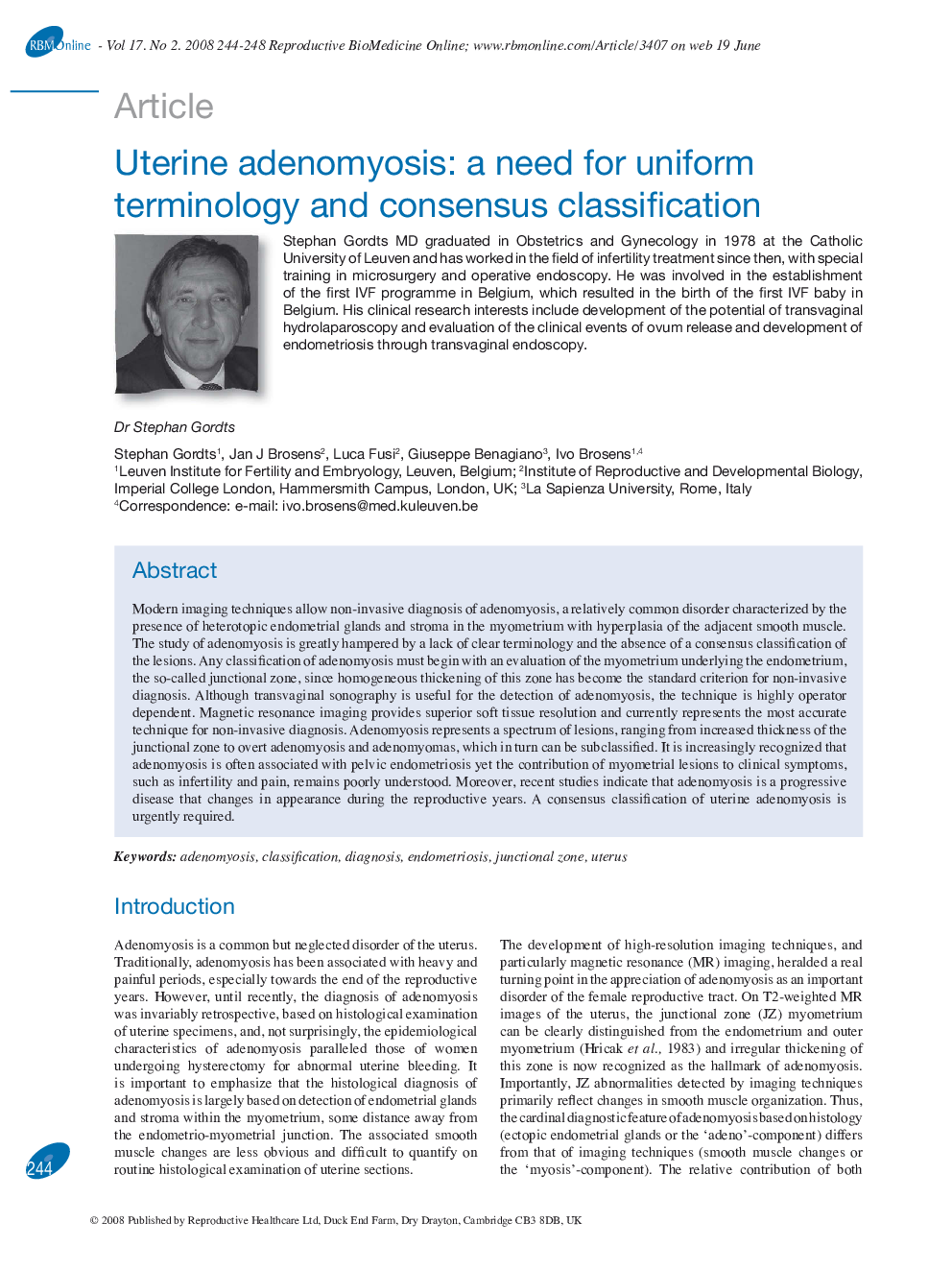| Article ID | Journal | Published Year | Pages | File Type |
|---|---|---|---|---|
| 3972775 | Reproductive BioMedicine Online | 2008 | 5 Pages |
Modern imaging techniques allow non-invasive diagnosis of adenomyosis, a relatively common disorder characterized by the presence of heterotopic endometrial glands and stroma in the myometrium with hyperplasia of the adjacent smooth muscle. The study of adenomyosis is greatly hampered by a lack of clear terminology and the absence of a consensus classification of the lesions. Any classification of adenomyosis must begin with an evaluation of the myometrium underlying the endometrium, the so-called junctional zone, since homogeneous thickening of this zone has become the standard criterion for non-invasive diagnosis. Although transvaginal sonography is useful for the detection of adenomyosis, the technique is highly operator dependent. Magnetic resonance imaging provides superior soft tissue resolution and currently represents the most accurate technique for non-invasive diagnosis. Adenomyosis represents a spectrum of lesions, ranging from increased thickness of the junctional zone to overt adenomyosis and adenomyomas, which in turn can be subclassified. It is increasingly recognized that adenomyosis is often associated with pelvic endometriosis yet the contribution of myometrial lesions to clinical symptoms, such as infertility and pain, remains poorly understood. Moreover, recent studies indicate that adenomyosis is a progressive disease that changes in appearance during the reproductive years. A consensus classification of uterine adenomyosis is urgently required.
